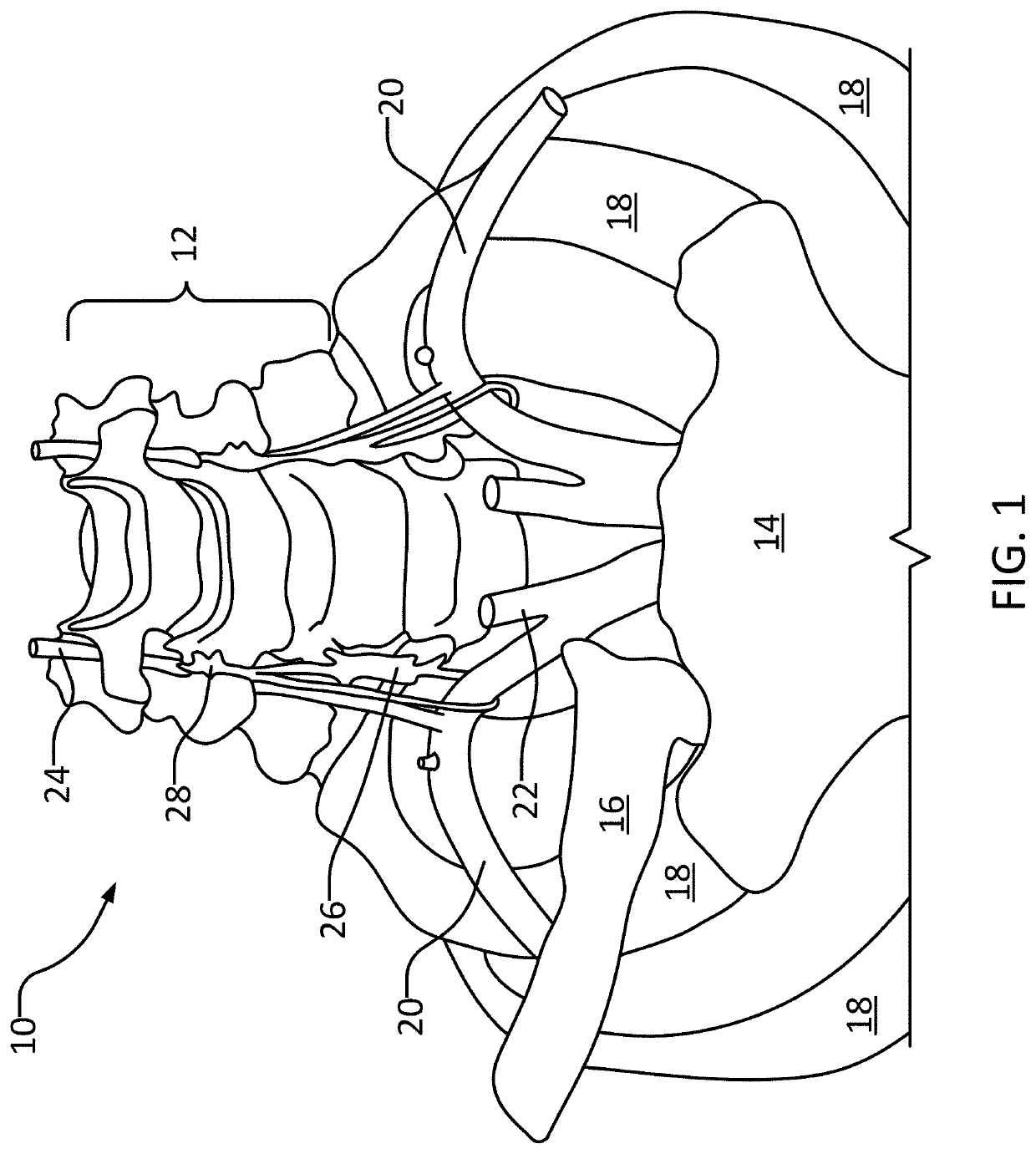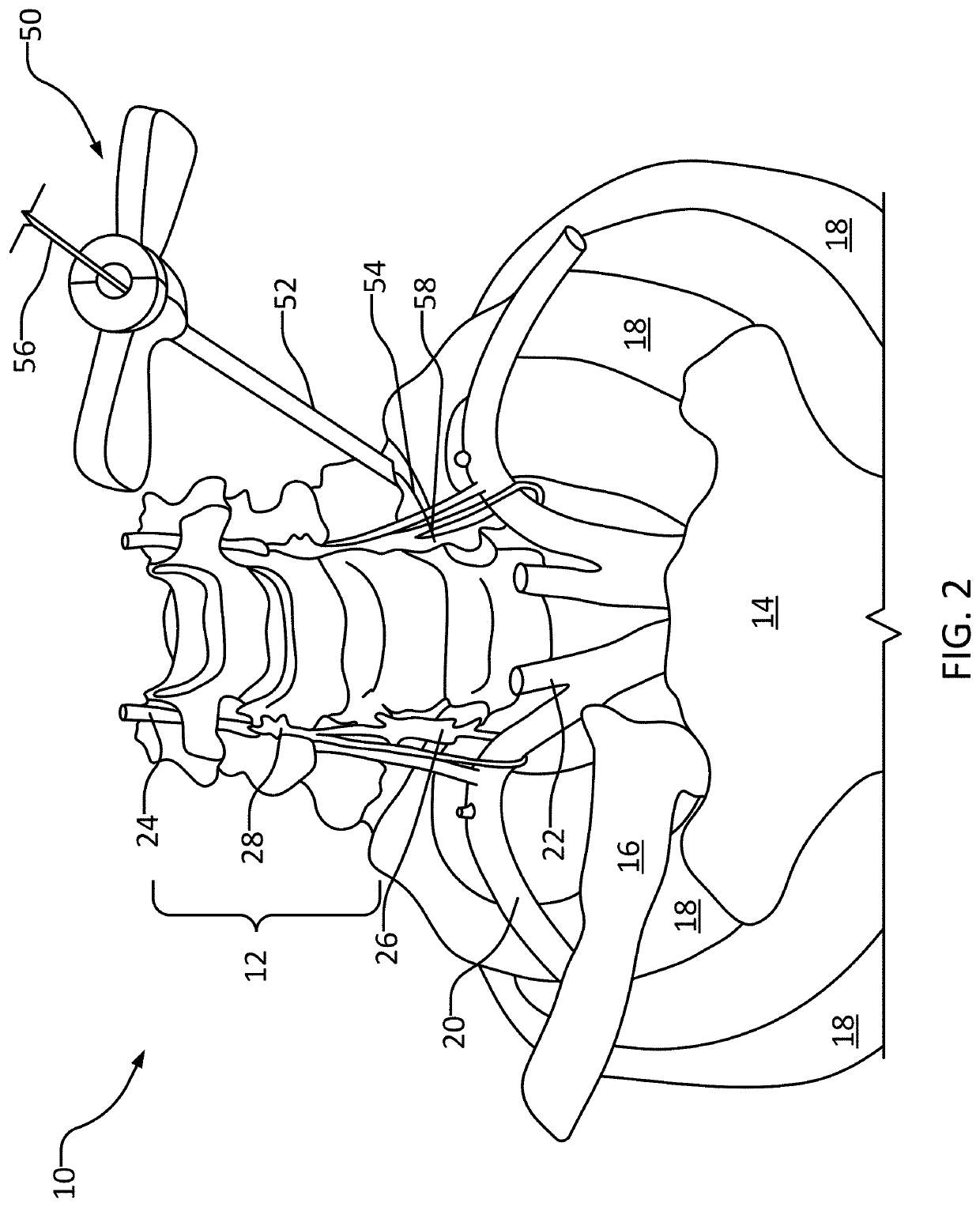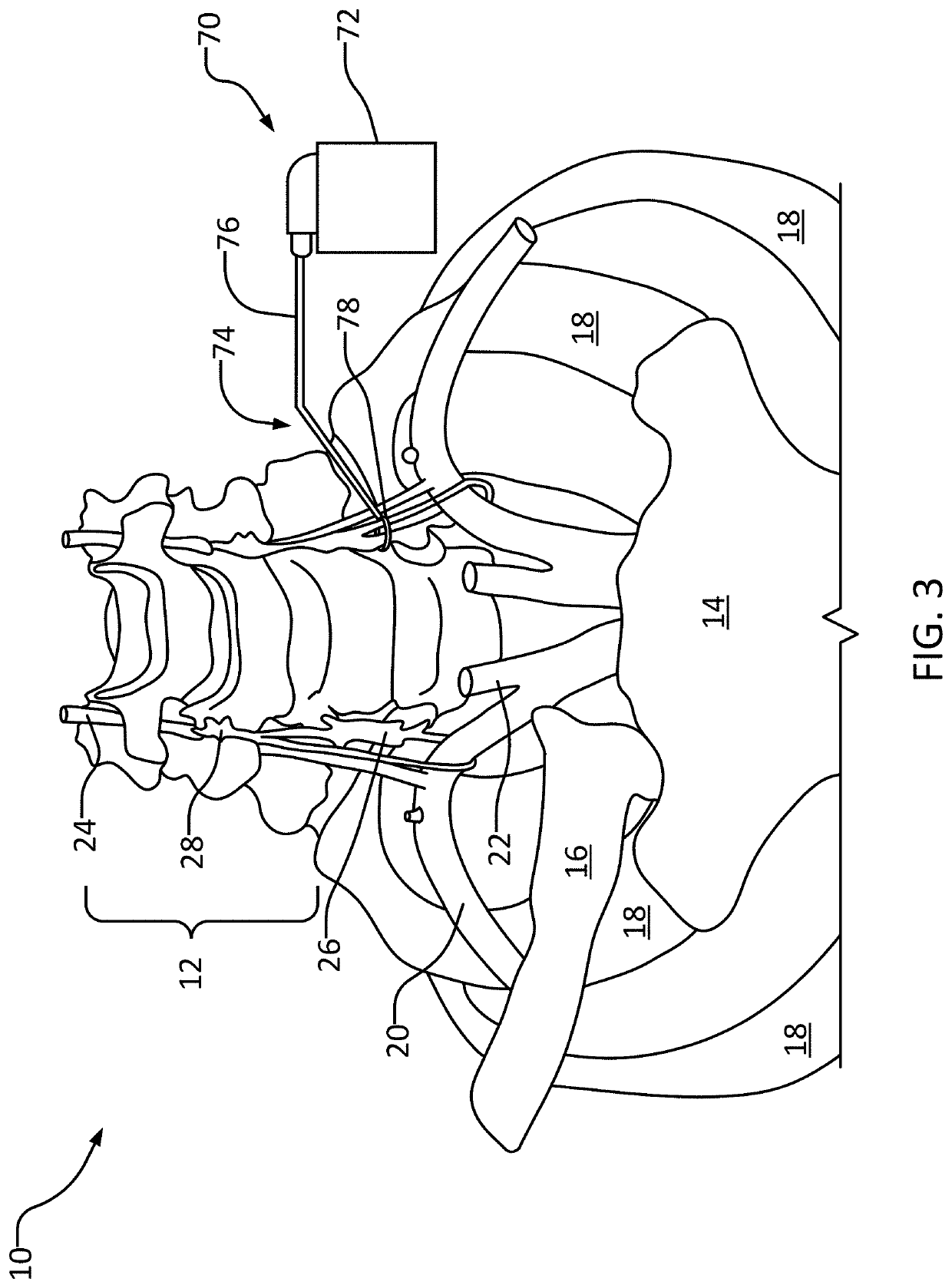Systems and methods for stellate ganglion stimulation and ablation
a technology of stellate ganglion and system and method, which is applied in the field of system and method of stellate ganglion stimulation and ablation, can solve the problems of concomitant autonomic dysfunction, the stimulation of stellate ganglion and/or ansa subclavius can produce significant changes in hemodynamic parameters, and achieve the effect of improving hemodynamic parameters and improving hemodynamic parameters
- Summary
- Abstract
- Description
- Claims
- Application Information
AI Technical Summary
Benefits of technology
Problems solved by technology
Method used
Image
Examples
Embodiment Construction
[0019]This document describes methods and materials for providing stimulation or ablation to the stellate ganglion. For example, this document describes methods and devices for providing stimulation or ablation to the stellate ganglion to modify blood pressure.
[0020]The autonomic nervous system controls most of the involuntary reflexive activities of the human body. The system is constantly working to regulate the glands and many of the muscles of the body through the release or uptake of the neurotransmitters acetylcholine and norepinephrine. Autonomic dysregulation involves malfunctioning of the autonomic nervous system, the portion of the nervous system that conveys impulses between the blood vessels, heart, brain, and all the organs in the chest, abdomen, and pelvis. Accordingly, neural stimulation that negates or overcomes the effects of vagal tone may be used as a treatment strategy for vasovagal syncope (VVS or hypertension).
[0021]Particular embodiments of the subject matter ...
PUM
 Login to View More
Login to View More Abstract
Description
Claims
Application Information
 Login to View More
Login to View More - R&D
- Intellectual Property
- Life Sciences
- Materials
- Tech Scout
- Unparalleled Data Quality
- Higher Quality Content
- 60% Fewer Hallucinations
Browse by: Latest US Patents, China's latest patents, Technical Efficacy Thesaurus, Application Domain, Technology Topic, Popular Technical Reports.
© 2025 PatSnap. All rights reserved.Legal|Privacy policy|Modern Slavery Act Transparency Statement|Sitemap|About US| Contact US: help@patsnap.com



